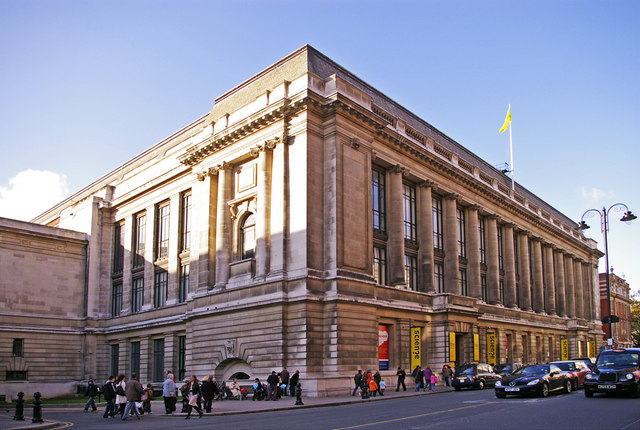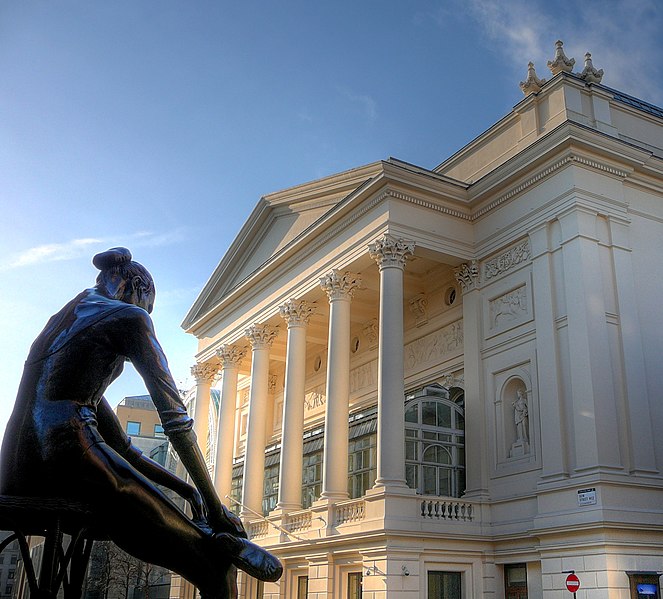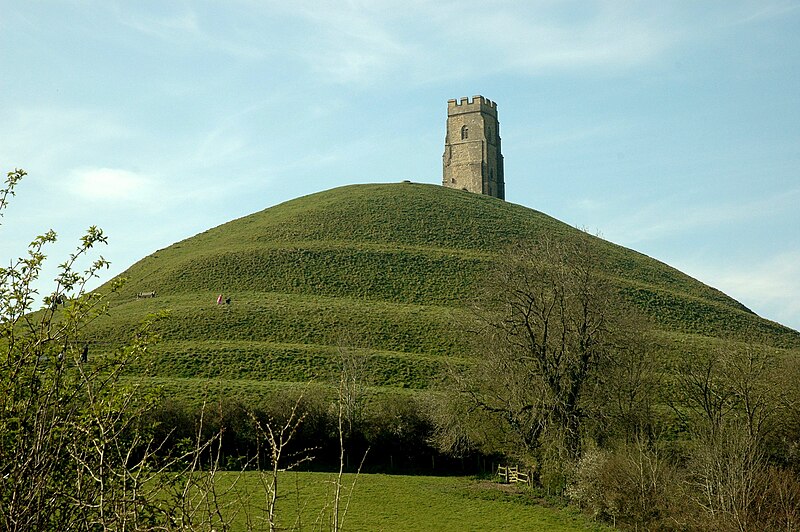Science Museum, London
The Science Museum is one of the three major museums on Exhibition Road, South Kensington, London in the Royal Borough of Kensington and Chelsea. The museum is a major London tourist attraction, attracting 2.7 million visitors annually.
Like other publicly funded national museums in the United Kingdom, the Science Museum does not charge for admission. Temporary exhibitions, however, do usually incur an admission fee. It is part of the Science Museum Group, having merged with the Museum of Science and Industry, Manchester in 2012.
A museum was founded in 1857 under Bennet Woodcroft from the collection of the Royal Society of Arts and surplus items from the Great Exhibition as part of the South Kensington Museum, together with what is now the Victoria and Albert Museum. It included a collection of machinery which became the Museum of Patents in 1858, and the Patent Office Museum in 1863. This collection contained many of the most famous exhibits of what is now the Science Museum. In 1883, the contents of the Patent Office Museum were transferred to the South Kensington Museum. In 1885, the Science Collections were renamed the Science Museum and in 1893 a separate director was appointed. The Art Collections were renamed the Art Museum, which eventually became the Victoria and Albert Museum.
When Queen Victoria laid the foundation stone for the new building for the Art Museum, she stipulated that the museum be renamed after herself and her late husband. This was initially applied to the whole museum, but when that new building finally opened ten years later, the title was confined to the Art Collections and the Science Collections had to be divorced from it. On June 26, 1909 the Science Museum, as an independent entity, came into existence. The Science Museum’s present quarters, designed by Sir Richard Allison, were opened to the public in stages over the period 1919–28. This building was known as the East Block, construction of which began in 1913 and temporarily halted by World War I. As the name suggests it was intended to be the first building of a much larger project, which was never realised.
The Science Museum now holds a collection of over 300,000 items, including such famous items as Stephenson's Rocket, Puffing Billy (the oldest surviving steam locomotive), the first jet engine, a reconstruction of Francis Crick and James Watson's model of DNA, some of the earliest remaining steam engines, a working example of Charles Babbage's Difference engine (and the latter, preserved half brain), the first prototype of the 10,000-year Clock of the Long Now, and documentation of the first typewriter. It also contains hundreds of interactive exhibits. A recent addition is the IMAX 3D Cinema showing science and nature documentaries, most of them in 3-D, and the Wellcome Wing which focuses on digital technology. Entrance has been free since 1 December 2001.
The museum houses some of the many objects collected by Henry Wellcome around a medical theme. The fourth floor exhibit is called "Glimpses of Medical History", with reconstructions and dioramas of the history of practiced medicine. The fifth floor gallery is called "Science and the Art of Medicine", with exhibits of medical instruments and practices from ancient days and from many countries. The collection is strong in clinical medicine, biosciences and public health. The museum is a member of the London Museums of Health & Medicine.
The Science Museum has a dedicated library, and until the 1960s was Britain's National Library for Science, Medicine and Technology. It holds runs of periodicals, early books and manuscripts, and is used by scholars worldwide. It has for a number of years been run in conjunction with the Library of Imperial College, but in 2007 the Library was divided over two sites. Histories of science and biographies of scientists are still kept at the Imperial College in London. The rest of the collection which includes original scientific works and archives are now located in Wroughton, Wiltshire.
The Science Museum's medical collections have a global scope and coverage. Strengths include Clinical Medicine, Biosciences and Public Health. The new Wellcome Wing, with its focus on Bioscience, makes the Museum a leading world centre for the presentation of contemporary science to the public.
Some 170,000 items which are not on current display are stored at Blythe House in West Kensington. Blythe House also houses facilities including a conservation laboratory, a photographic studio, and a quarantine area where newly arrived items are examined.
























